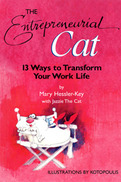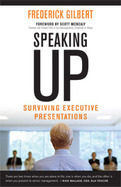- Read a transcript of Amy Goodman's interview with Si and Elizabeth on Democracy Now!
- A legendary activist and a distinguished public philosopher address a timely but complex issue in a way that is accessible and compelling
- Evaluates privatization not just economically, but in social, political, and human terms
- Offers principles and practices for creating alternatives to privatization and strengthening the public sector
2016
Access the deepest source of inspiration and vision
We live in a time of massive institutional failure that manifests in the form of three major divides: the ecological, the social, and the spiritual. Addressing these challenges requires a new consciousness and collective leadership capacity. In this groundbreaking book, Otto Scharmer invites us to see the world in new ways and in so doing discover a revolutionary approach to learning and leadership.
In most large systems today, we collectively create results that no one wants. What keeps us stuck in such patterns of the past? It's our blind spot, that is, our lack of awareness of the inner place from which our attention and intention originate. By moving through Scharmer's U process, we consciously access the blind spot and learn to connect to our authentic Self-the deepest source of knowledge and inspiration. Theory U offers a rich diversity of compelling stories, examples, exercises, and practices that allow leaders, organizations, and larger systems to cosense and coshape the future that is wanting to emerge.
This second edition features a new preface in which Scharmer identifies five transformational trends and describes U process case stories around the world. There are also eight color drawings by Kelvy Bird that capture U journey applications and illustrate the concepts in the book, as well as new resources for applying the principles and practices.
Cats don't worry about what others think; they follow their instincts, leap with confidence, and always land on their feet. In this wise and whimsical guide, Mary Hessler-Key's "Jazzie the Cat" shows humans how to follow her feline example and take charge of their careers and their lives. Through thirteen simple lessons drawn from her life as a cat, she takes readers through "purrfected" techniques for motivating a start-up venture, taking more initiative in their jobs, or defining the next step in a career transition.
An increasing number of people are working independently within organizations or starting their own businesses. They need practical advice they can digest quickly and put to use immediately. Jazzie offers up the basic tenets of an entrepreneurial approach to life and work in an accessible format that's both humorous and profound. From doing what comes naturally, to finding the right niche, to improving their strategy, to listening to "the meowing within," Jazzie's advice helps would-be entrepreneurs and intrapreneurs everywhere find their place in the sun.
More engaging and down-to-earth than other career guides, The Entrepreneurial Cat combines the enthralling illustrations of an award-winning artist with the enlightening insights of an experienced consultant for readers of all ages and career levels. The book concludes with a do-it-yourself "Cats-Can" section that gives readers the space to evaluate their talents and goals and poses thought-provoking questions that spur creativity, spark motivation, and inspire the formulation of successful career strategies.
- Cat lovers and non-cat lovers alike will delight in this humorous, colorfully illustrated guide to being more proactive and fulfilled in their business lives
- The charming character "Jazzie the Cat" offers 13 basic tenets that help readers build a positive "cattitude" for creating or revamping their careers
- An innovative "Cats-Can!" section delivers personal self-analysis and tools for putting the book's principles into practice
2023
Many current and aspiring entrepreneurs are looking for a solid business education that also deeply aligns with their progressive values. Based on a course field-tested with over 500 students, this book fills that gap. It covers traditional topics such as business strategy and structure, finance, marketing, recruiting, and branding from a socially just and environmentally regenerative perspective. And it also touches on topics such as strategies to reverse climate change, nonviolent communication, self-managing organizations, locally self-reliant economies, racial justice, and more.
Traditional MBA programs are based on outdated principles that were developed during the Industrial Revolution-and they can be hugely expensive. Sustainable MBA programs, while laudable, are too incremental to make a sufficient impact. The Next Economy MBA is for entrepreneurs seeking to make business an active force for good. It draws on the authors' experience of working with over 300 social enterprises, from small organizations like Winona's Hemp and Heritage Farm to household names like Ben & Jerry's and Patagonia.
Our current economy, what the authors call the Business as Usual Economy, has created a massive wealth gap, a climate crisis, racial division, and needless housing, food, and healthcare shortages. This book shows how businesses can pave the way to a Next Economy that meets the basic needs of all people and restores and protects the planetary ecosystem.
2013
- The first book to focus on presenting to senior managementpeople with very specific expectations and requirements and the power to make or break careers
- Draws on interviews with more than fifty C-level executives
- Includes nine chapters containing QR codes for free videos on the chapter topics
- Click here for the press release
There are two times when youre alone in life: one is when you die, and the other is when you present to senior management.
Rick Wallace, CEO, KLA-Tencor
If you are in middle management, you live with daily ambiguity, lack of control, and even chaos. To get anything done, you must present your ideas to decision makers, and those presentations can be brutal. Careers and projects can come unwound in a matter of minutes if a presenter at the top level doesnt know the rules.
Fear in the middle creates fog at the top, and bad decisions are made. The stakes are highone presentation can make or break a careerbut the rules are utterly unclear. Or at least they used to be.
Speaking Up is an indispensable resource for anyone who needs to know how to present to those higher up the chain. It offers revelatory insights into the minds of the men and women at the topinformation that is crucial to understanding what theyre looking for from presenters. Tactics and techniques that work well with peers, subordinates, and immediate supervisors may actually work against you when presenting up the chain.
Psychologist and coach Frederick Gilbert shows why these high-level presentations are about one thing: delivering information to help extremely talented, highly stressed people make good decisionsfast.
Gilbert focuses on three simple rules for speaking up: (1) know the people, (2) get to the point, and (3) improvise. Based on ten years of research and hundreds of interviews, Gilberts book is unique in featuring extensive comments from executives explaining exactly what they want and dont want in a presentation, as well as midlevel managers stories of triumphs and tragedies and what they learned as a result. This a must-read book for surviving high-stakes meetings.
















